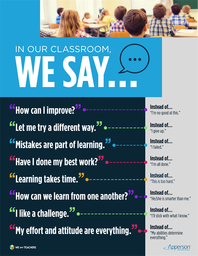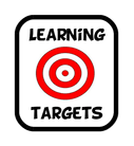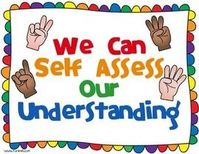5-6d Creative Communicator
Students present creations that customize a message.
Customize: Use pictures and your words to say what you want to say.
Customize: Use pictures and your words to say what you want to say.
NOTE Nov 7, 2017. Add family photo insert at home with parent's permission early in project next year. Also try screen castify to record using microphones for voice narration.
Check with your learning partners to see if they need help.
1. Help give meaning to the task in a way that makes sense to your learning partners
2. Get ideas from others on creating a customized message.
You will be successful if....
1. You seek understanding from others for creating a customized message in the best way possible.
"Be a friend to yourself; do all you can to be wise. Try hard to understand, and you will be rewarded."
2. You can describe the meaning of creating a customized message to someone who needs help from you.
"Like clouds and wind that bring no rain, is a person who brags of gifts they never give."
"Who is wise and understanding among you? Show by your good life that your works are done with gentleness born of wisdom."
To earn Kid's Choice,
1. Rephrase the learning target in your own words to a learning partner.
2. Explain to a learning partner why today's learning target is important.
1. Help give meaning to the task in a way that makes sense to your learning partners
2. Get ideas from others on creating a customized message.
You will be successful if....
1. You seek understanding from others for creating a customized message in the best way possible.
"Be a friend to yourself; do all you can to be wise. Try hard to understand, and you will be rewarded."
2. You can describe the meaning of creating a customized message to someone who needs help from you.
"Like clouds and wind that bring no rain, is a person who brags of gifts they never give."
"Who is wise and understanding among you? Show by your good life that your works are done with gentleness born of wisdom."
To earn Kid's Choice,
1. Rephrase the learning target in your own words to a learning partner.
2. Explain to a learning partner why today's learning target is important.

What's your Spark?
Sparks are passions and skills that we feel deeply and help us grow. Sparks come from inside a person, rather than being forced from the outside. A Spark is more than just a passing interest or talent. Sparks bring us energy and joy. They can grow into a life purpose, and allow a person to make a contribution to the world. Examples of Sparks are what make you light up inside!
Sparks are passions and skills that we feel deeply and help us grow. Sparks come from inside a person, rather than being forced from the outside. A Spark is more than just a passing interest or talent. Sparks bring us energy and joy. They can grow into a life purpose, and allow a person to make a contribution to the world. Examples of Sparks are what make you light up inside!
People can have more than one Spark at the same time!
Discover Your Spark! Thrive Foundation for Youth.
1. What makes you want to jump out of bed in the morning?
2. What makes you dread getting out of bed? (Sometimes talking about the things that aren’t your spark can give you clues about finding it.)
3. Describe something that you’ve done that you are proud of.
4. Which day is your favorite day of the week? What do you look forward to doing on that day?
5. Think of someone who actively pursues his or her spark. Describe what you see.
6. If you could spend a whole day doing anything you wanted, and money and resources were unlimited, what would you do? Why?
7. To explore your potential spark, is there something you’d like to try or learn more about
How great would it be to know each other by our spark? I will be thinking about what my sparks are too!
Discover Your Spark! Thrive Foundation for Youth.
1. What makes you want to jump out of bed in the morning?
2. What makes you dread getting out of bed? (Sometimes talking about the things that aren’t your spark can give you clues about finding it.)
3. Describe something that you’ve done that you are proud of.
4. Which day is your favorite day of the week? What do you look forward to doing on that day?
5. Think of someone who actively pursues his or her spark. Describe what you see.
6. If you could spend a whole day doing anything you wanted, and money and resources were unlimited, what would you do? Why?
7. To explore your potential spark, is there something you’d like to try or learn more about
How great would it be to know each other by our spark? I will be thinking about what my sparks are too!
Spark Ideas: Animals, computers, nature, God, protecting wildlife, hunting, fishing, camping, sports, hobbies, telling jokes, debate, acting, directing, taking pictures, videos, animation, living with joy, caring, reading, standing up for others, family, journalism, radio & TV production, helping homeless, play a guitar, drums, horn or other musical instruments, listening to music, leading a choir, writing songs, playing in a band, painting, drawing, writing stories, poems, plays, dance, karate, cooking, fashion, clothes, shoes, building things, student government, spending money, saving money, teaching, coaching, learning, friends, being supportive, encouraging others, serving, helping, volunteering.
Any time you have a good memory, just create a slide, write about it, and add a picture.
Any time you have a good memory, just create a slide, write about it, and add a picture.
Sample Spark Projects

Checking Your Work
1. Write 1 good,strong paragraph for each slide. Imagine the voice of the teacher who taught you how to write a good paragraph. What would she be telling you? You should end up with 1 cover and 5 spark slides for 6 total slides to start.
2. After writing a strong paragraph, insert 1 picture for each slide (for now) to match your paragraph.
3. Read your paragraph out loud; you will find more errors to correct this way.
4. Check spelling; red line, right click, correct.
5. Capitalize first letter of each sentence, titles and anywhere else capitalization is needed.
6. Tab indent beginning of paragraph.
7. Look for other correct punctuation such as 1 space after a period of a sentence, before the next sentence.
8. Find a partner to double check your work. Partner points out errors you missed; YOU make the correction.
9. Add a 2nd picture to each slide and 2 to 4 on your cover.
10. Add more spark slides.
11. Are we ever really "done"? No, whether it is getting better at sports, your slide shows or anything else, life is about making your best effort, continuously learning, improving, and having fun while you do it.
1. Write 1 good,strong paragraph for each slide. Imagine the voice of the teacher who taught you how to write a good paragraph. What would she be telling you? You should end up with 1 cover and 5 spark slides for 6 total slides to start.
2. After writing a strong paragraph, insert 1 picture for each slide (for now) to match your paragraph.
3. Read your paragraph out loud; you will find more errors to correct this way.
4. Check spelling; red line, right click, correct.
5. Capitalize first letter of each sentence, titles and anywhere else capitalization is needed.
6. Tab indent beginning of paragraph.
7. Look for other correct punctuation such as 1 space after a period of a sentence, before the next sentence.
8. Find a partner to double check your work. Partner points out errors you missed; YOU make the correction.
9. Add a 2nd picture to each slide and 2 to 4 on your cover.
10. Add more spark slides.
11. Are we ever really "done"? No, whether it is getting better at sports, your slide shows or anything else, life is about making your best effort, continuously learning, improving, and having fun while you do it.


